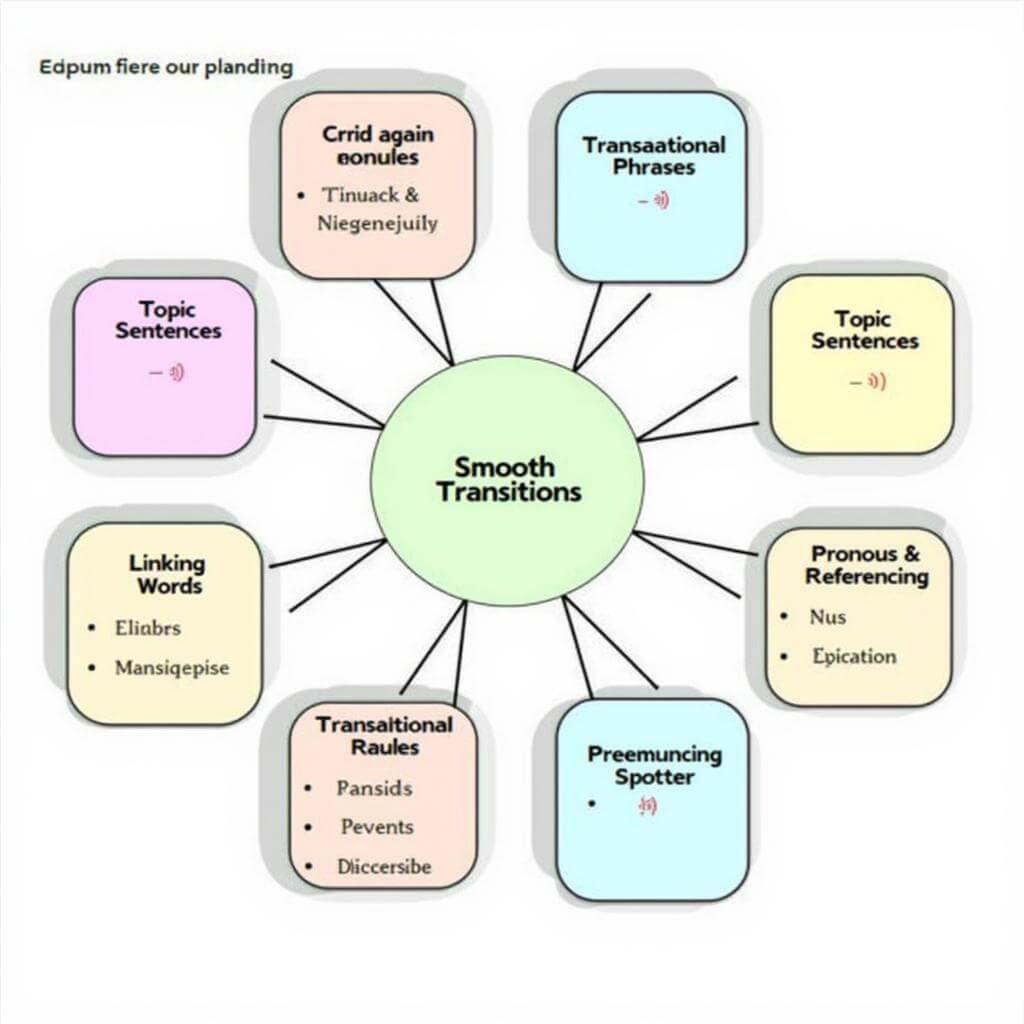Developing smooth transitions in IELTS Speaking is a crucial skill that can significantly enhance your fluency and overall performance. By seamlessly connecting ideas and topics, you’ll demonstrate a higher level of English proficiency to the examiner. This comprehensive guide will explore effective strategies to help you create fluid transitions in your IELTS Speaking responses.
Understanding the Importance of Smooth Transitions
Smooth transitions are the glue that holds your IELTS Speaking answers together. They help you move effortlessly from one idea to another, creating a cohesive and well-structured response. Without proper transitions, your speech may sound disjointed and lacking in fluency, potentially impacting your band score.
How to increase fluency in IELTS speaking
The Impact on Your IELTS Score
Examiners pay close attention to how well candidates can link their ideas. By mastering smooth transitions, you can:
- Improve your coherence and cohesion score
- Enhance your fluency and spontaneity
- Demonstrate a wider range of vocabulary and grammatical structures
Key Strategies for Developing Smooth Transitions
1. Use Transitional Phrases and Expressions
Incorporate a variety of transitional phrases to connect your ideas smoothly:
- To add information: “Furthermore,” “In addition,” “Moreover”
- To contrast ideas: “However,” “On the other hand,” “Nevertheless”
- To provide examples: “For instance,” “To illustrate,” “Such as”
- To conclude: “In conclusion,” “To sum up,” “All things considered”
2. Practice Linking Words and Phrases
Linking words act as bridges between sentences and ideas. Some effective linking words include:
- Sequencing: “Firstly,” “Secondly,” “Finally”
- Cause and effect: “Because,” “As a result,” “Consequently”
- Comparison: “Similarly,” “Likewise,” “In the same way”
How to avoid filler words in IELTS speaking
3. Develop Topic Sentences
Start each new idea with a clear topic sentence that relates to the previous point. This helps create a logical flow in your response.
4. Use Pronouns and Referencing
Refer back to previously mentioned ideas using pronouns or phrases like “this,” “that,” or “these ideas.” This technique helps maintain continuity in your speech.

5. Practice Paraphrasing
Paraphrasing allows you to revisit and expand on previous points without sounding repetitive. It’s an excellent way to create smooth transitions between ideas.
Dr. Emily Watson, a renowned IELTS Speaking expert, emphasizes the importance of paraphrasing: “Paraphrasing is not just about avoiding repetition; it’s a powerful tool for creating cohesion in your speech. It shows the examiner that you can express ideas in multiple ways, which is a key indicator of language proficiency.”
6. Utilize Rhetorical Questions
Rhetorical questions can serve as natural transitions between topics while engaging the listener. For example: “Speaking of education, have you ever wondered how technology is changing the classroom experience?”
7. Create Mental Maps
Before you start speaking, quickly organize your thoughts into a mental map. This will help you transition more smoothly between related ideas.
Practical Exercises to Improve Your Transitions
- Topic Chaining: Practice moving from one topic to another by finding common threads or associations.
- Transition Drills: Create a list of transition phrases and practice using them in various contexts.
- Impromptu Speaking: Give yourself random topics and practice transitioning between them smoothly.
- Record and Analyze: Record your practice sessions and analyze your use of transitions.
Common Pitfalls to Avoid
When developing smooth transitions in IELTS Speaking, be aware of these common mistakes:
- Overusing the same transitional phrases
- Abrupt topic changes without proper transitions
- Neglecting to link ideas across different parts of your response
- Using transitions that don’t fit the context or relationship between ideas
Real-Life Application of Smooth Transitions
To truly master smooth transitions, it’s essential to apply these techniques in real-life conversations. Practice with friends, language exchange partners, or in everyday situations to make these transitions feel natural and effortless.
Professor Mark Thompson, an IELTS examiner with over 15 years of experience, notes: “The candidates who score highest in Speaking are those who can navigate through topics as smoothly as they would in their native language. It’s not just about knowing the transitions; it’s about using them naturally and appropriately.”
Conclusion: Elevating Your IELTS Speaking Performance
Developing smooth transitions in IELTS Speaking is a skill that requires practice and dedication. By incorporating the strategies and exercises outlined in this guide, you’ll be well on your way to achieving a higher band score in the Speaking test. Remember, the key is to make your transitions sound natural and effortless, enhancing the overall coherence and fluency of your responses.
How to score high in IELTS speaking test
As you continue to practice and refine your transition techniques, you’ll find that your ability to express complex ideas and maintain a smooth flow of conversation improves significantly. This skill will not only benefit you in the IELTS Speaking test but also in real-life English communication scenarios.
FAQs About Smooth Transitions in IELTS Speaking
-
How many transition phrases should I use in my IELTS Speaking responses?
There’s no fixed number, but aim to use a variety of transitions naturally throughout your response. Quality and appropriateness are more important than quantity. -
Can using too many transitions negatively impact my score?
Yes, overusing transitions can make your speech sound unnatural. Focus on using them effectively rather than frequently. -
How can I practice smooth transitions if I’m preparing for IELTS alone?
Try recording yourself speaking on various topics and analyze your use of transitions. You can also practice with online language exchange partners or AI conversation tools. -
Are there specific transitions that IELTS examiners prefer?
Examiners appreciate a wide range of accurately used transitions. Focus on mastering various types rather than memorizing specific phrases. -
How do I transition smoothly between the different parts of the IELTS Speaking test?
Use phrases like “Moving on to…” or “Regarding…” to transition between topics. Stay relaxed and treat it as a natural conversation.
How to manage time in IELTS speaking test
Remember, developing smooth transitions is an ongoing process. Keep practicing, stay confident, and you’ll see significant improvements in your IELTS Speaking performance.